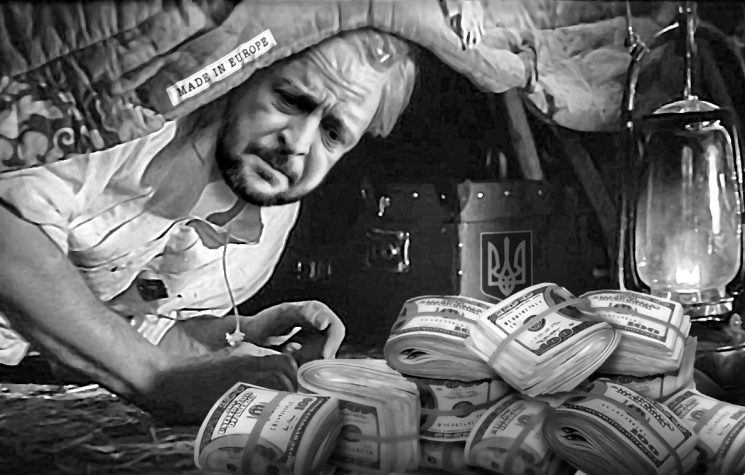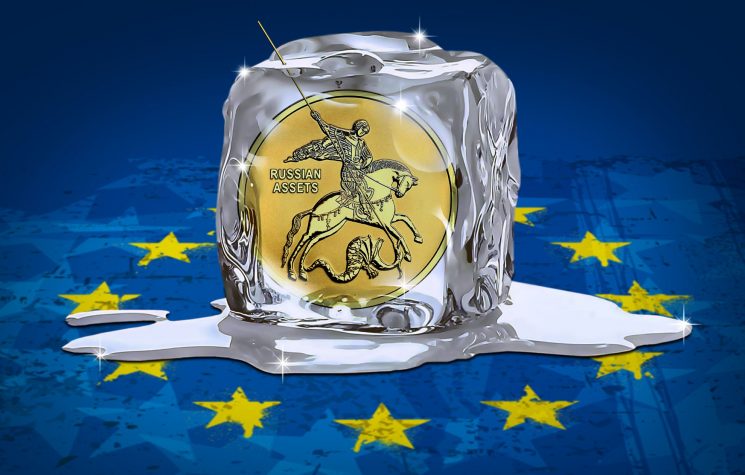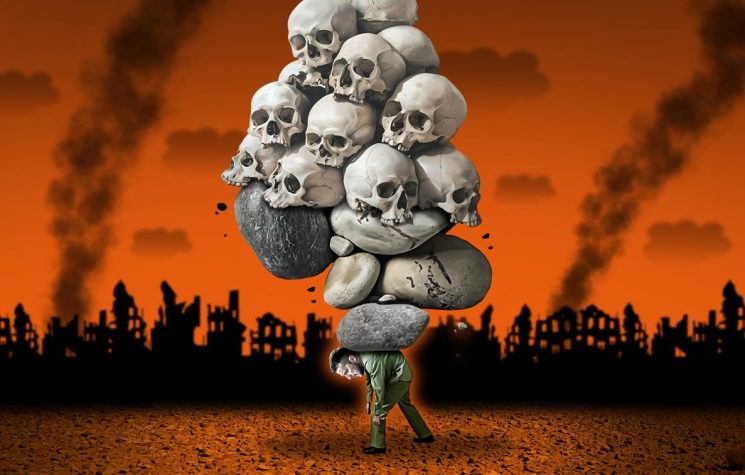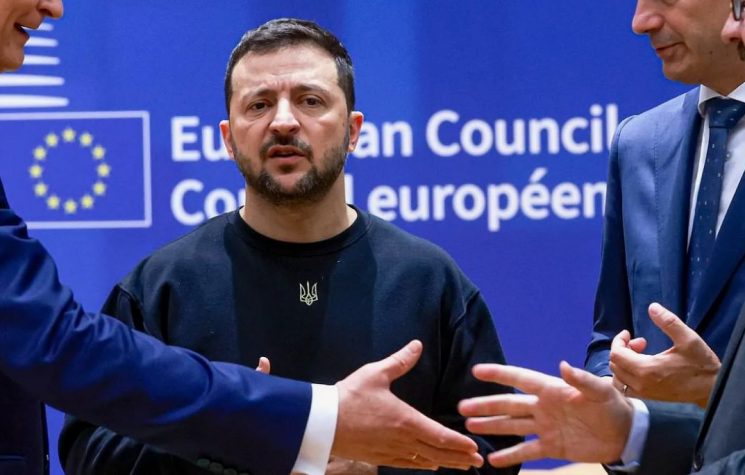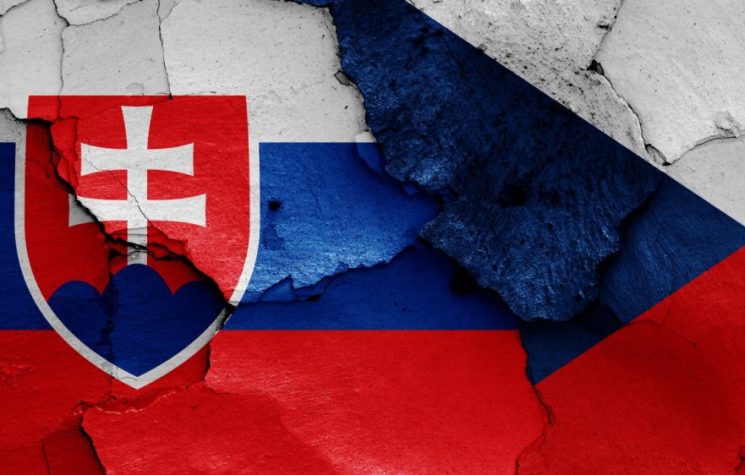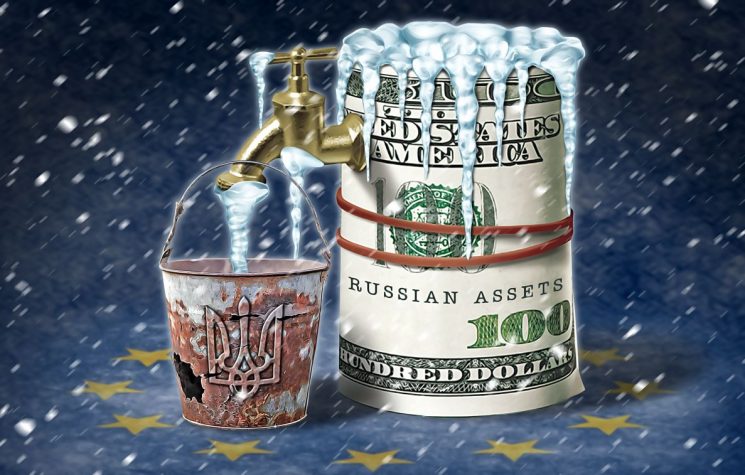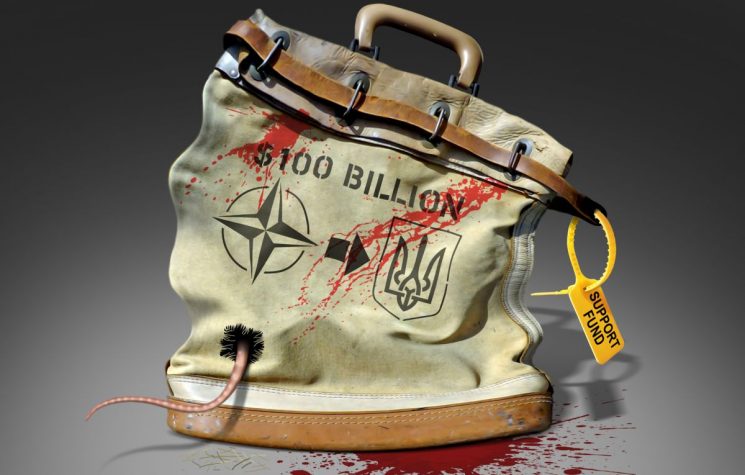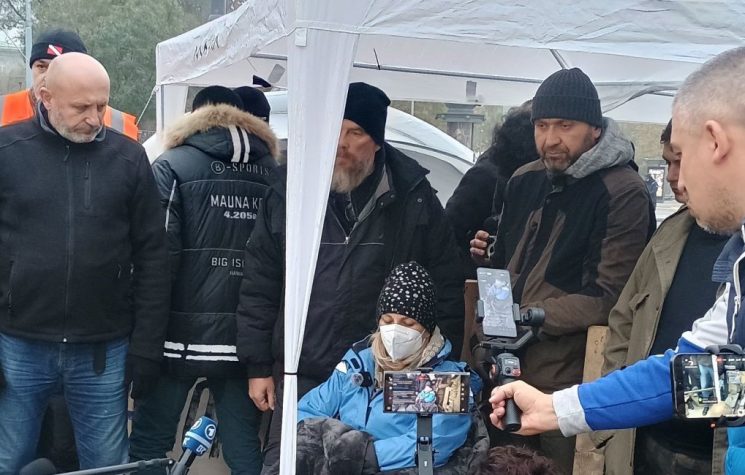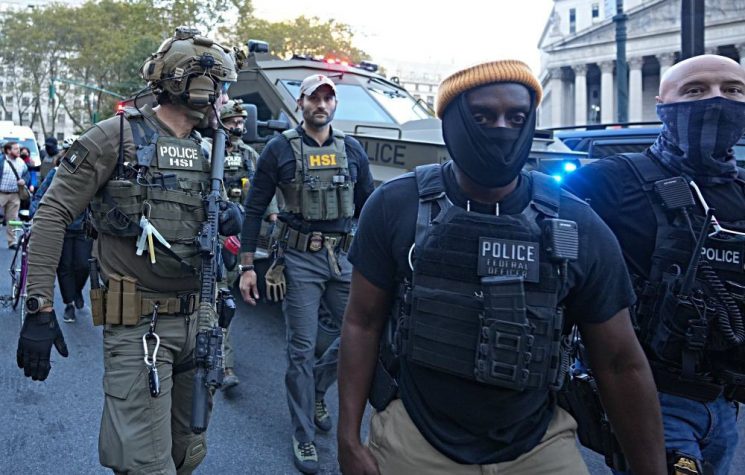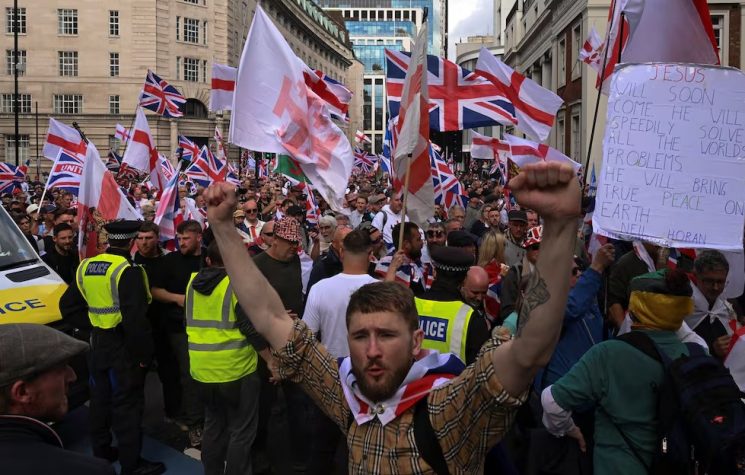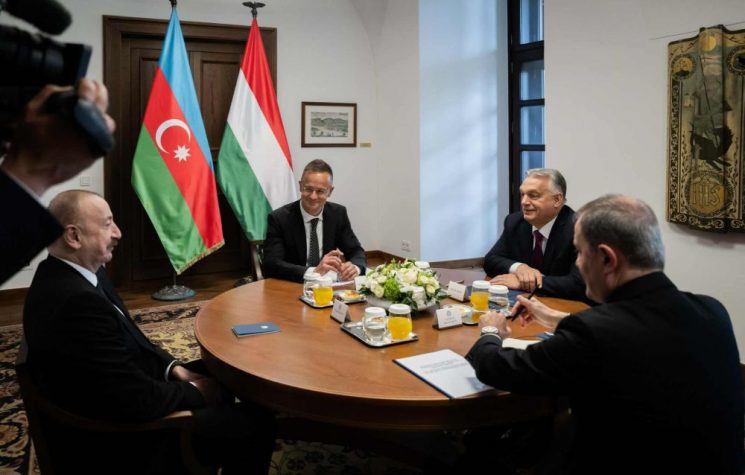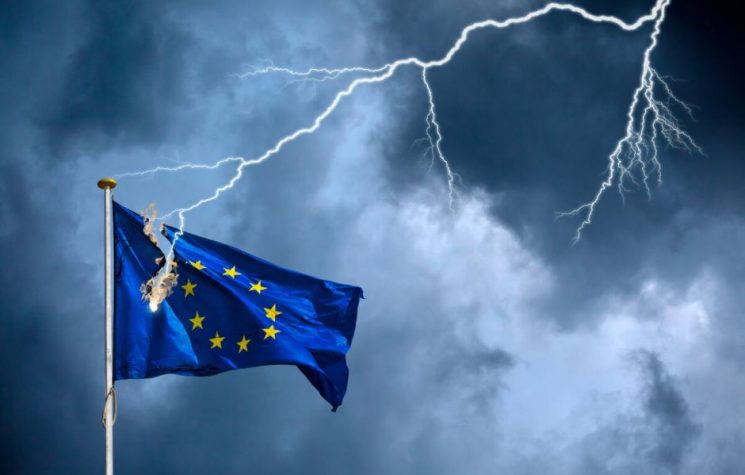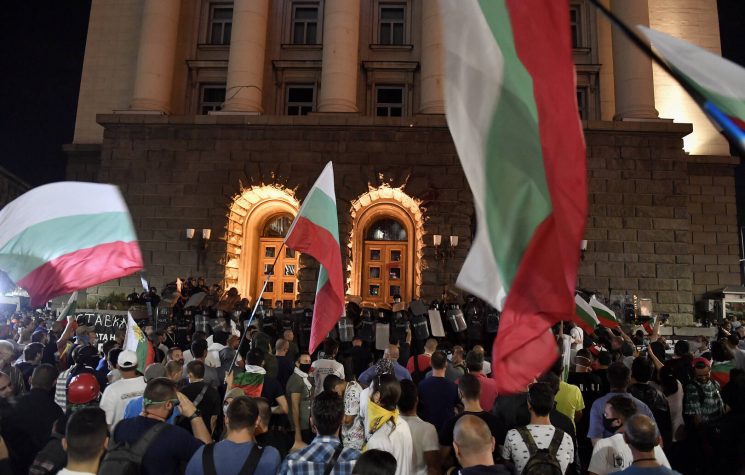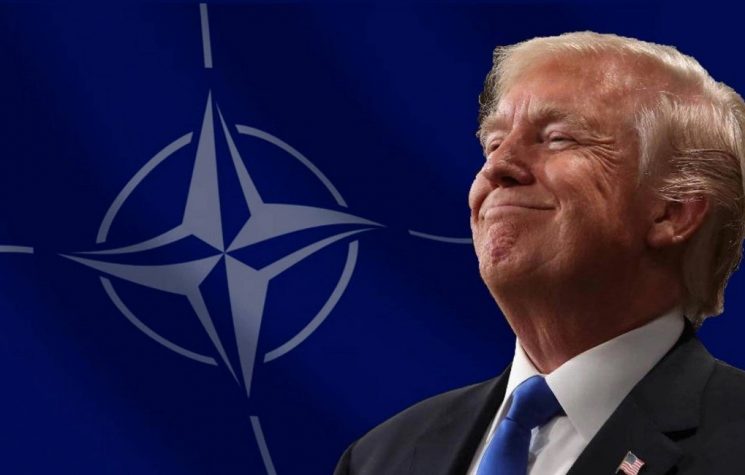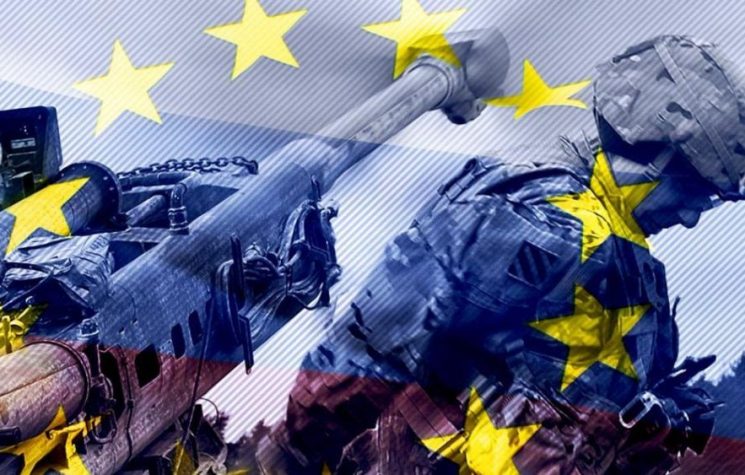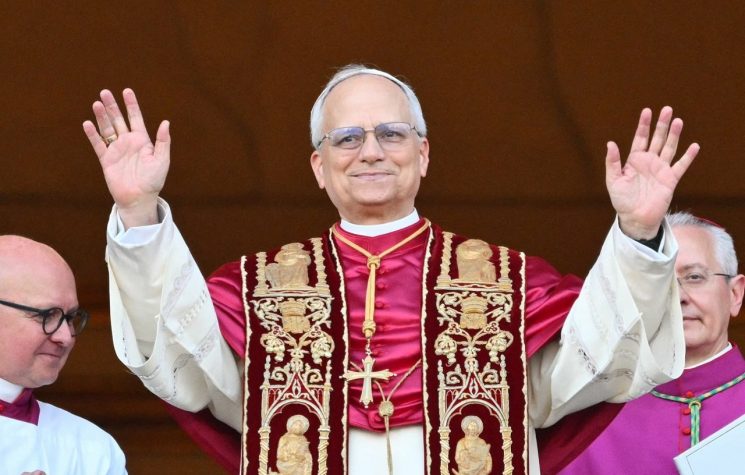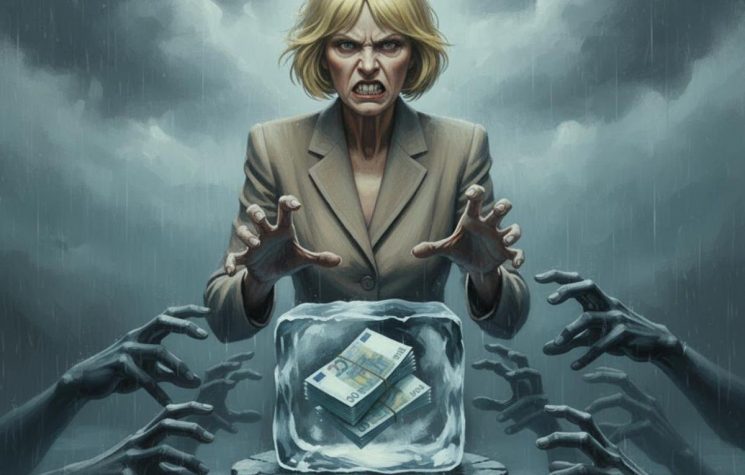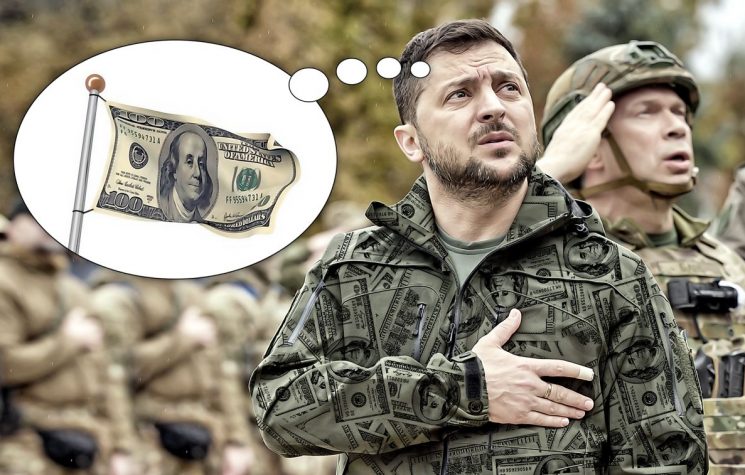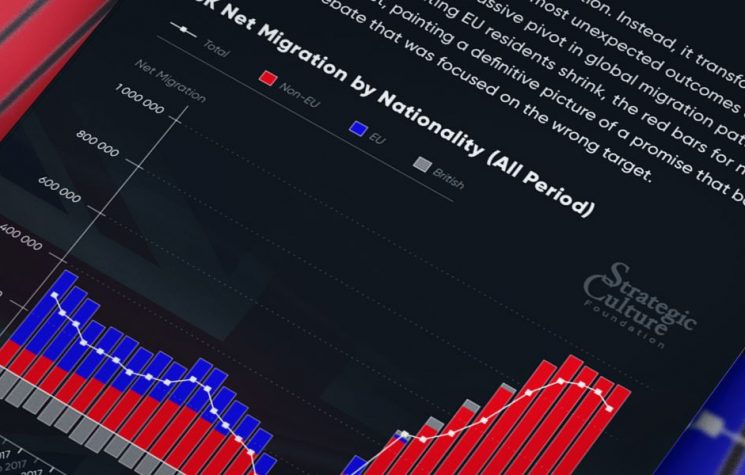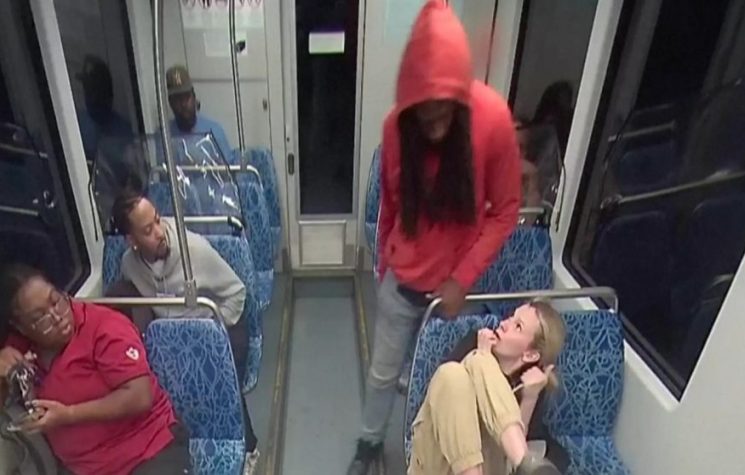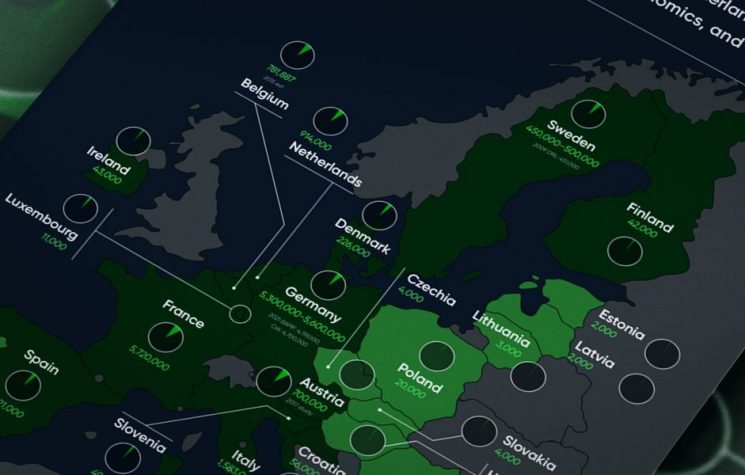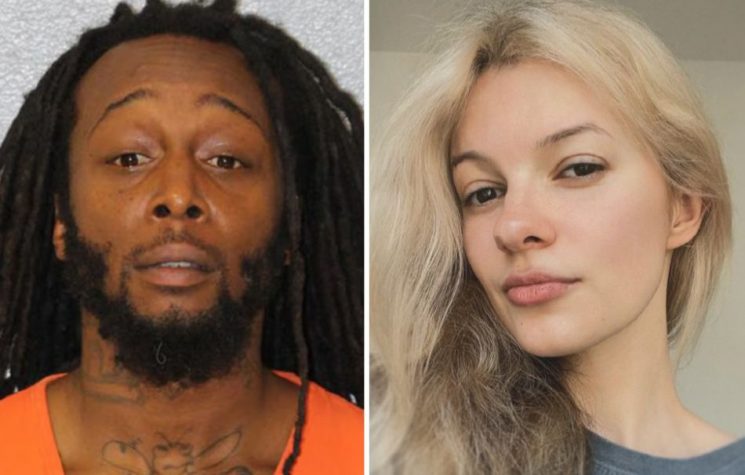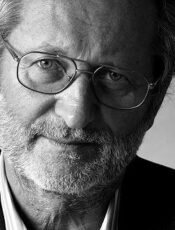Meet Ukraine, a country with Europe’s poorest and sickest population, the hub of cigarette smuggling, the world leader in female body trafficking.
When a statutory minimum wage was first introduced in Ukraine, in 2015, it was 0.34 euros, or 34 cents per hour. After that, it was increased: in 2017 it was 68 cents, in 2019 it was 10 cents more, which is 78 cents, and since 2021 it has been 1.21 euros. Ever heard of it?
Even this lowest wage is not always paid
Of course, that doesn’t mean that this minimum wage is actually paid correctly in this state. Thus, for a full work week in 2017, the monthly minimum wage was 96 euros. But in the textile and leather industry, for example, this minimum wage for one-third of the mostly female workforce was rarely paid on time. Payment by the piece is also widespread – a certain number of shirts must be sewn in one hour; if this does not work out, unpaid reworking is required.
If there were no orders, unpaid leave was ordered. In many cases, the annual vacation due by law was not granted or not paid. Management prevented the election of employee representatives. With this minimum wage, people were far below the official subsistence level: It amounted to 166 euros in the year in question.
The Hunger Wage Chain from Ukraine to Neighboring EU Countries
There are about 2,800 officially registered textile companies, but also a presumably equally high number of unregistered small businesses. For decades, they have formed a normal shadow economy, often in small towns and villages.
Yet most of these companies rank only as second-class suppliers for the internationally better-connected low-cost producers in neighboring EU countries, especially in Poland, but also in Romania and Hungary.
Thus 41 percent of the shoes go as starvation-wage semi-finished goods from Ukraine first to the low-wage factories of Romania, Hungary and Italy: there they get the innocent and beautiful label “Made in EU”.
Textile workers themselves can only afford second hand imports from Germany
The majority of the approximately 220,000 textile workers are older women. They keep their heads above water only by subsistence farming, for example by having their own garden with a chicken coop. Diseases due to malnutrition are common.
The textile workers mostly buy their own clothes from second-hand imports, which come mainly from Germany, Poland, Belgium, Switzerland and the USA. Ukraine imports much more textiles than it exports.
The expensive Boss and Esprit imports from the rich EU West, which are pre-produced in Ukraine, are destined for the rich elite and the NGO bubble in Kiev – while the majority of imports are the cheapest second-hand textiles. Textile workers, and indeed the majority of the population, can only afford the almost free disposable textiles from the rich states, as Clean Clothes Campaign reported.
But Western trade unions and “human rights activists” still look to Asia and Bangladesh when it comes to low wages in the textile industry that violate human rights. Although low wages in Ukraine are much lower. Also in the current discussions in the EU and in the German Bundestag about a supply chain law: There the view goes far out, globally, to Asia, while the EU-Ukrainian poverty chain is denied.
Here it sits, the corruption: C&A, Hugo Boss, Adidas, Marks&Spencer, New Balance, Esprit, Zara, Mexx are the profiting end users. They live from the exploitation which is against human rights. Here in the rich EU states sit the main players of corruption. They secretly welcome the non-existent or complicit labor inspectorate of the Ukrainian state, and the EU also covers the systemic labor injustice, with ritual hypocritical and inconsequential admonition of corruption in Ukraine.
Auto suppliers, pharmaceuticals, machine building
Something similar to the textile and leather industry is going on in other sectors as well. Ukraine was a center of industrial production in the Soviet Union. After independence in 1991, oligarchs took over the companies, took profits, and put nothing into innovation. For Western companies, millions of well-qualified employees were available – at low wages.
Thousands of companies, mainly from the USA and EU countries – about 2,000 from Germany alone – placed subcontracting orders for rather simple parts: Porsche, VW, BMW, Schaeffler, Bosch and Leoni, for example, for car cables; pharmaceutical groups such as Bayer, BASF, Henkel, Ratiopharm and Wella have their products filled and packaged; Arcelor Mittal, Siemens, Demag, Vaillant, Viessmann maintain assembly and sales branches. Wages of two to three euros are paid here, i.e. more than the minimum wage, but still lower than in the neighboring EU countries of Hungary, Poland and Romania.
That is why the Ukrainian sites are closely networked with the sites of the same companies in these neighboring EU countries, where the statutory minimum wages are above 3 euros and below 4 euros. However, the networking is just as valid with the even poorer neighboring states of Moldova, Georgia and Armenia, which are not EU members. Branches are also operated here. In the course of the “Eastern Neighborhood”, organized by the EU, all differences of qualification, even lower payment are exploited – with Ukraine as a revolving door.
Labor migration in millions
This selective exploitation of location advantages by Western capitalists has not led to national economic development. On the contrary, Ukraine became economically impoverished. The majority of the population has been made poorer and sicker. A mass reaction is labor migration.
It began early on. By the late 1990s, several hundred thousand Ukrainians had emigrated to Russia. Wages were not much higher, but in Russia excessive Westernization of lifestyles and increases in the cost of living for food, rent, health, and government fees do not take hold.
Since the 2000s, and accelerated by the aftermath of the 2014 Maidan coup, some 5 million Ukrainians have been migrant workers – about two million more or less permanently abroad, and about three million commuting to neighboring states. In particular, the Polish state, which in any case lays claim to western parts of Ukraine, encourages labor migration from Ukraine. About two million Ukrainians are employed in Poland, mainly in low-skilled jobs as cleaners, domestic helpers, waiters, caregivers for the elderly, and truck drivers. In Poland, the business of employment agencies is also flourishing: they declare Ukrainians to be Polish citizens and place them as home care workers in Germany and Switzerland, for example: they pay the minimum wage there for a 40-hour week, but in reality the care workers have to be on call 24 hours a day, according to the contract with the Polish agency.
Hundreds of thousands of Ukrainians are also employed on a permanent basis, on a temporary basis or commuting back and forth in Romania, Hungary, Slovakia and the Czech Republic, with minimum wages of between 3.10 euros and 3.76 euros. Ukrainians are happy about this, even if they are pushed a bit below these minimum wages – it is still much better than in their home country, and the labor inspectorate says nothing and the EU says nothing either (Werner Rügemer: Imperium EU – Labour Injustice, Crisis, New Resistances, tredition 2021).
Students from Ukraine like to be dedicated seasonal workers in EU agriculture. In Lower Saxony alone, there are about 7,000 students annually, who admittedly do not necessarily study, but enter with forged matriculation papers. Neither in Ukraine nor in Germany is there any control, as a study by the Friedrich Ebert Foundation found.
Minimum wage in Lithuania: in 2015 it was 1.82 euros, five times higher than in Ukraine at the time; in 2020 it was 3.72 euros. The EU is promoting the development of Lithuania into a European freight forwarding center: with the help of artificial intelligence, cheap and willing truck drivers from third countries such as Ukraine and Moldova, but also from further afield such as the Philippines, are steered across Europe. They don’t need to learn any language; they receive their instructions via smartphone and navigator. For example, with the start of the war in Ukraine, trucking companies in Lithuania and Poland suddenly had a shortage of over 100,000 truck drivers – from Ukraine, they were not allowed to leave because of military service.
Women’s Poverty I: Forbidden Prostitution Flourishes
The patriarchal oligarch state of Ukraine has extremely deepened the inequality between men and women. With a gender pay gap of 32 percent, Ukrainian women are in the very last place in Europe: On average, they receive one-third less pay than their male colleagues, and in the field of finance and insurance the figure is as high as 40 percent for the same work – the EU average is 14 percent. Because of patriarchal stereotypes, women are also particularly often pushed into precarious part-time jobs, even more so than in Angela Merkel’s Germany, which ranks second to last among EU countries in terms of discrimination against women.
This patriarchal poverty of women includes the prohibition of prostitution, which flourishes under these conditions. Primary school teachers, who cannot get by on their 120 euros a month, are also among the estimated 180,000 women who work as prostitutes in Ukraine, divorced single women with children, or unemployed women.
Because prostitution is forbidden, brothel operators earn money, as do police officers and cab drivers, because they have a good income through silence. Private apartments are also used, like the brothels in prime locations in the capital Kiev. Tourists are lured in – with 80 euros they are in. Eight services per night – not uncommon. A little less than half of the income remains with the women. Some hope for a transitional period of one, two or even three years. Often in vain. A third become drug addicts, a third are considered HIV positive.
After the “liberalization” of sexual services by the federal government of Schröder/SPD and Fischer/Greens at the beginning of the century, Germany became the “brothel of Europe”. The federally owned development agency GTZ advertised in its “Germany Travel Guide for Women” for Ukrainian women who now had good prospects in the sex business. Many came. Merkel’s Germany became the European center for commercial prostitution, most of it illegal and tolerated by the authorities – favorable conditions for women who do not come from an EU member state. So it is obvious that pimps are now trying to recruit fleeing Ukrainian women at the border in 2022.
Women’s Poverty II: The Female Body as Exploitable Material
Ukraine is a pleasing location for Western companies to engage in practices that are otherwise forbidden, a thousandfold site for U.S.-led globalization. This is also true for the commercial use of the female body, far beyond illegal prostitution.
Ukraine is the global hot spot for industrial surrogacy, with more extensive “liberalization” than otherwise. Widespread female poverty provides an inexhaustible reservoir.
Vittoria Vita, La Vita Nova, Delivering Dreams or more prosaically BioTex – these are the names under which surrogacy agencies in Kiev and Kharkiv advertise their services and their women. Pretty, healthy Ukrainian women are offered in catalogs for wealthy foreigners. Between 39,900 and 64,900 euros are the prices for a healthy delivered baby. The wish child tourists come from the USA, Canada, Western Europe and China.
The intended parents deliver the egg and sperm to one of the dozens of specialized clinics. They are fertilized in a test tube. Then the foreign embryo is implanted in the surrogate mother. The surrogate mother carries a genetically foreign child. This was developed in the USA, but is much more expensive there: between 110,000 and 240,000 euros. In Ukraine it is less regulated. The woman carrying the child must not have anything to do genetically with the child, she is just a foreign tool that is to be forgotten immediately after use, no longer exists at all – and is ready for the next use for a completely different foreign couple.
The prices differ depending on whether the intended parents want a specific gender for their ordered baby or not: without a choice of gender, it costs 39,900 euros at BioTex, with two attempts at the desired gender it costs 49,900 euros, and with unlimited attempts it costs 64,900 euros. These offers include hotel accommodation, issuance of birth certificate and passport in the German consulate. So far, more than 10,000 such babies have been delivered worldwide.
The surrogate mother – a surrogacy company bears the appropriate name: Surrogacy Ukraine – receives a monthly bonus of between 300 and 400 euros during the pregnancy, and after successful delivery of the product, the success bonus is increased to 15,000 euros. If there is a miscarriage, the child is disabled or its adoption is refused, the surrogate mothers get nothing. Their psychological condition is not taken into account, and there is no social security against damage to their health. There are no studies on the long-term consequences.
Zero-hour contracts, expropriation of trade unions
The Zelensky government increased the minimum wage to 1.21 euros, but at the same time it weakens and destroys the trade unions, which have already been increasingly weakened since the independence. The December 2019 Labor Law is the culmination of extreme labor injustice to date:
*The zero-hour labor contract is allowed: Work on demand. When the entrepreneur has work to assign, he gets the employee at short notice. The number of hours worked and the income from work can be zero.
*Dismissals no longer have to be justified.
*Individual negotiation of employment contracts is encouraged – “negotiation” is, of course, a euphemistic term for offers without alternatives, which is not a problem given the high unemployment rate. Collective bargaining can be suspended in companies with fewer than 250 employees – that’s over 95 percent of companies. The companies benefiting from this are especially state-owned, then agribusiness and food and tobacco corporations such as Nestle and Philip Morris.
In addition, the unions are to be expropriated and their assets confiscated. Even though they are weakened, they still have land and in some cases large houses from Soviet times, and these are in the centers of the cities. For Zelensky, these are “Russian leftovers” – so expropriate!
Hundreds of thousands of Ukrainians protested against the new law – no Western news reported that. In a joint letter dated September 9, 2021, the International Trade Union Federation and the European Trade Union Federation – ITUC, CSI, ETUC – pointed out to the Ukrainian government and the EU committee in charge of Ukraine’s integration: Ukraine’s new labor law violates not only all UN and International Labor Organization (ILO) labor rights, but also the EU’s low standards – no response.
Expropriation and impoverishment of peasants
After independence, the approximately 7 million peasants from their collective farms were allotted an average of about four hectares of land as property. This is too little to run an independent farming business. Therefore, the peasants have so far leased their small land to domestic and foreign oligarchs, for a low rental fee, currently averaging $150 per year, from $80 in 2008.
For example, oligarch Andry Verevsky and his Kernel Group have acquired 570,000 hectares of leased land, oligarch Oleg Bakhmatyuk and UkrLandFarming have acquired 500,000 hectares, the U.S. “locust” investor NCH Capital from New York has acquired 400,000 hectares, the oligarch Yuriy Kosyuk for MHP has 370,000 hectares, the oligarch Rinat Akhmetov for his Agro-Holding 220,000 hectares, while the Continental Farmers Group from Saudi Arabia leases “only” 195,000 hectares. Swedish and Dutch pension funds are also involved. From Bavaria come small oligarchs like Dietrich Treis and Hans Wenzel, who have 60 hectares at home but farm 4,500 hectares in Ukraine on incomparably cheap leases. Alexander Wolters from Saxony has leased 4,200 hectares together, for 60 euros per hectare a year.
They are all fully integrated into the EU and the Western world market:
*The legal and tax domiciles of the agrobusinesses are preferably in the EU-standard financial havens of Cyprus, Luxembourg, and Switzerland; Ukrainian governments contributed tax waivers and subsidies.
*They consistently receive large loans from the European Bank for Reconstruction and Development (EBRD) and the European Investment Bank (EIB).
*Seed, fertilizer, pesticide and agricultural technology is mainly in the hands of U.S. and German corporations such as Cargill, Archer Daniels, John Deere, Corteva, Bayer and BASF.
Highly paid managers run the businesses. A few of the farmers can perform unskilled labor at minimum wage in this large-scale agribusiness. A little non-leased land allows them to survive meagerly.
But the Zelensky government has ended the leasing practice: As of July 1, 2021, farmers can sell their land, initially only to buyers with Ukrainian citizenship. For this purpose, the government is setting up an auction portal where bids can also be made anonymously. The release of the sale of the highly fertile Ukrainian black earth was demanded not only by oligarchic land grabbers, but also by the International Monetary Fund (IMF), which imposed this condition on the highly indebted Ukraine for a new 5 billion loan: Land may be sold, this leads to economic upswing! A later referendum in 2024 should then initiate the next step: Sale of the land also to foreigners. The further impoverishment of the peasant families is one of the consequences that will be initiated under these conditions. Therefore, many farmers protested against this “land reform” – without effect.
Smuggling center Ukraine: for 30 years
Starting in 1992, the largest cigarette companies Philip Morris, R.J. Reynolds, British American Tobacco and Japan Tobacco bought cigarette factories in Ukraine. In some cases, the state stayed on for a few years as a minority shareholder.
Production with good, but now lower-paid skilled workers applied to the least to the Ukrainian market. The wide range of luxury brands, such as Marlboro and Chesterfield, down to the cheapest brands, was produced for export. In return, the complicit government lowered tobacco tax to an internationally unrivaled level, less than half of what it would otherwise be in Europe. At the same time, customs controls remained at rock-bottom levels.
At the end of the 1990s, the European Commission realized: Philip Morris & Co produce more than 90 percent in Ukraine for export, including with the cheap cigarettes for global smuggling to poor states, but also to the rich EU states. The smuggling would damage the EU states by 4 billion euros annually. The EU sued Philip Morris and Reynolds for damages. The court in New York dismissed the suit in 2001. Three years later, Philip Morris agreed to pay the EU $1.3 billion to help fight smuggling and counterfeit labels.
Morris did not pay for the time being, however, and the agreement was renewed in 2010. Morris agreed to pay the sum, spread over 12 years, to Belgium, Finland, France, Germany, Greece, Italy, Luxembourg, the Netherlands, Portugal and Spain. These states signed the agreement – but all Eastern European EU states did not. At the same time, complicity flourished behind the scenes: Michel Petite, Director General of the EU Commission’s Legal Service from 2001 to 2007, moved to the U.S. law firm Clifford Chance in 2008, took on the client Philip Morris there, and also became chairman of the EU’s “Ethics Committee”.
In Ukraine, a pack of Marlboro cigarettes costs 2.50 euros and in Kosovo 1.65 (as of 2021), despite a somewhat increased tobacco tax in the meantime – while the pack costs 7 euros in Germany, 6.20 in Belgium, 10 in France, 6 in Italy, and so on. Therefore, of course, the export and smuggling from Ukraine continues. That’s why negotiations are ritualistically inconclusive, including at the 21st EU-Ukraine summit in 2022. “Ukraine has become a global hub for the delivery of illegal cigarettes to Europe,” admitted Deputy Head of the Ukrainian President’s Office, Alexei Honcharuk. President Zelensky, of course, has again pledged that Ukraine will fight tobacco smuggling even more fiercely than before.
Ukraine: Highest Military Spending in Europe
The 2014 Maidan coup organized by Western actors – NATO communication department, Horizon Capital, Swedbank, National Endowment for Democracy, Black See Trust, Soros Foundation – hoisted petty banker Arseniy Yazeniuk into the office of Ukrainian prime minister. Boycotts against Russia led to the loss of several hundred thousand jobs in Ukraine – about 40,000 for German companies like auto supplier Leoni alone.
The Ukrainian government now took its cue from the EU and introduced a statutory minimum wage in 2015: 34 cents per hour worked. This was a clear announcement of the level at which labor incomes were moving. Workers such as those in the textile industry and in agribusiness are happy when the minimum wage is actually paid. Other employees are happy when the hourly wage comes close to three euros. Labor migration in the direction of foreign countries accelerated, was and is gladly used by the not so impoverished neighboring Eastern European countries.
The poorest state in Europe in terms of population majority, with the help of NATO, especially the U.S. and the U.K., rearmed even faster from 2016, from 2.9 percent of gross domestic product (GDP) for the military within half a decade to double by 2020, even before the war: to 5.9 percent – high percentage poster boy for U.S. President Obama’s demand to increase military budgets to 2 percent. This puts Ukraine on the 2nd place in the world after Saudi Arabia, ahead of the second best U.S. model boy, highly armed Israel.
Non-NATO member Ukraine, with now 41 million inhabitants, has with its 292,000 soldiers more military than the other and also larger NATO members (U.S. excluded, of course), i.e. more soldiers than Germany, France, UK, Italy, Greece, Spain, Poland, Romania…. The state with the poorest population in Europe afforded itself or its lords and ladies in Washington, Brussels, London, Paris and Berlin at the same time by far the highest military expenditures, perhaps for the preparation of a war, or for what?
The poorest and sickest population in Europe
The IMF granted loans to the “most corrupt state in Europe” (Transparency International) with conditions for social and pension cuts, for increases in municipal charges (water, sewage, garbage) and state energy prices, and for further privatization. The IMF was also a warmonger: the loss of Donbass would have a negative impact on the amount of Western loans, it let it be known.
In 2020, the national debt was reduced to an optically attractive 60%, which is excellent for accession to the EU. The accompanying consequence: The majority of the population is even poorer, the cost of living, food, municipal taxes, rents, health care and energy costs have risen – are now only partially affordable, or not at all. The average pension in 2013, before the Maidan coup, was still 140 euros, which was the peak in the history of independent Ukraine. Since 2017, the average pension is 55 euros. More and more pensioners have to continue working – if they found work.
Since Western-oriented independence, Ukraine’s population has shrunk from 51 million to now 41 million. Even before the current war, the International Organization for Migration (IOM) predicted further shrinkage in 2050: 32 million inhabitants, and they would be even older on average than they are now.
The poorest population in Europe is also the sickest: Ukraine ranks first in Europe for deaths due to malnutrition, as the European Journal for Epidemiology documented in 2019.
As the President of the European Commission, Ms. von der Leyen, so effusively praised, “Ukraine is impressively defending our European values!” That is why Ukraine should become an EU member. The President added: “Ukraine deserves this status because it is ready to die for the European dream.”
The Christian-painted politician is more right than she thinks.










